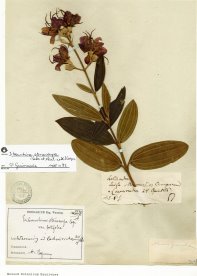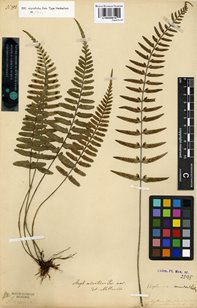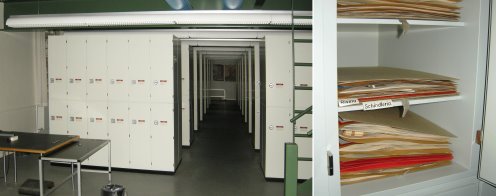General herbarium of vascular plants
Curator
Collection managers
Olof Ryding & Karen Gitte Bach
About the collection
The General herbarium contains almost 1.4 million collections of flowering plants, gymnosperms and vascular cryptogams from all parts of the world except Denmark and Greenland (the latter collections are stored in separate herbaria: Danish herbarium and Greenland herbarium). In particular the General herbarium contains many old collections from Brazil, Mexico and Yemen, as well as newer collections from Argentina, Ethiopia, Greece and Thailand. The Australian and Pacific floras are comparatively poorly represented. Almost all recognized plant families and about 11,280 of the c. 14,000 recognized genera are represented. The General herbarium is a unique reference of natural history and a resource for researchers both at the Museum and Worldwide.
The collections have been built over 400 years through field expeditions and exchange with other herbaria across the World. Our oldest collections are book-herbaria from the 17th century. We have several collections on loose sheets from famous expeditions and voyages during the 18th century. Major collections of more recent date include c. 11,000 vials of alcohol-preserved orchids (Orchidaceae) from SE Asia (mainly Thailand), mostly originating from G. Seidenfaden’s famous collection of live orchids in the Botanical Garden. Professor Ib Friis has spent 45 years studying the flora and vegetation of Eritrea, Ethiopia and Somalia and made nearly 16000 collections, now kept here, at the Royal Botanic Gardens, Kew, and in Addis Abeba.
The 40 most important collectors in the General herbarium are H. von Eggers, P. Forsskål, I. Friis, A. Hansen, B. Hansen, O.J. Hansen, J.P. Hjerting, J.W. Hornemann, P.E. Isert, B. Kamphøvener, M. Køie, J. G. König, J. Lange, K. Larsen, F. Liebmann, P. W. Lund, G. Marcgrave, H.C. Ostenfeld, O. Paulsen, T.M. Pedersen, F.C. Raben, K. Rahn, C. Raunkiaer, D. Rolander, J. Ryan, J. Schmidt, P.K.A. Schousboe, J.F. Schouw, C.F. Schumacher, G. Seidenfaden, Chr. Smith, A. Strid, P. Thonning, M. Vahl, J.O. Voigt, K. Vollesen, N. Wallich, E. Warming, H. West, A.S. Ørsted.
 General herbarium in numbers
General herbarium in numbers
- Estimated number of specimens/collections: The herbarium comprises c. 1,370,000 specimens (including the subcollections). About 1,320,000 of these are mounted on herbarium sheets, and about 50,000 are stored elsewhere in bottles, boxes and plastic bags; about half of these are dried specimens and about half are preserved in alcohol.
- Known types: About 21,500 (c. 21,100 of these are digitized, and c. 19.600 of them have also been scanned).
- Digitally available specimens: 33,770 (with label data from different collections in two different databases, but not necessarily photographed). 21,420 types and other valuable specimens have been scanned in high resolution; images of 15,998 of these specimens are now available in JSTORs database.
- Percentage digitized: c. 2.5 %.
Strengths
- With almost 1.4 million specimens, the General herbarium is a unique reference of natural history, and a resource for researchers both at the Museum and Worldwide.
- Particularly many old collections from Brazil, Mexico and Yemen.
- Particularly many newer collections from Argentina, Ethiopia, Greece and Thailand.
Subcollections
Most of the specimens are kept in a large main herbarium, but 20 subcollections of odd-size herbarium sheets, three-dimensional collections or particularly valuable old collections and book-herbaria are kept separate. The following nine are the most important:
- P. Forsskål's herbarium
- Isert’s & Thonning’s herbaria
- G. Seidenfaden’s herbarium
- The folio herbarium
- The Marcgrave herbarium
- The alcohol and dry preparations
- The wood collections
- The seed collection
- The collection of useful plants
History
See separate page.




